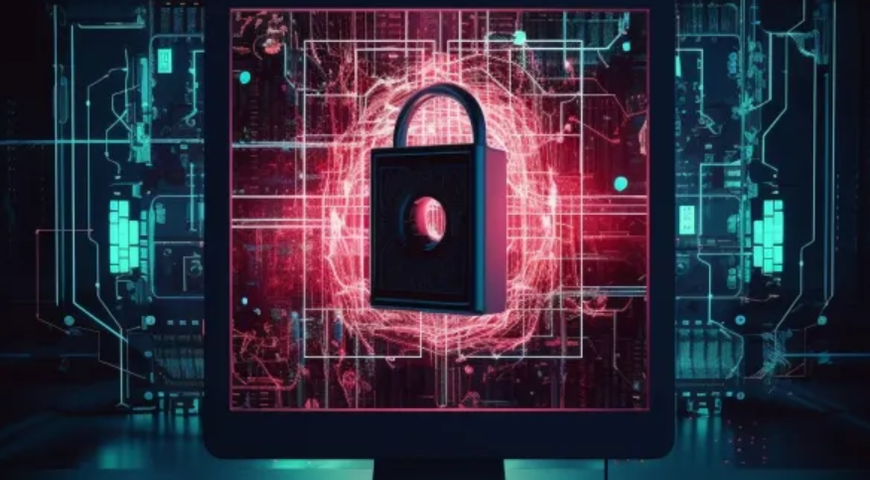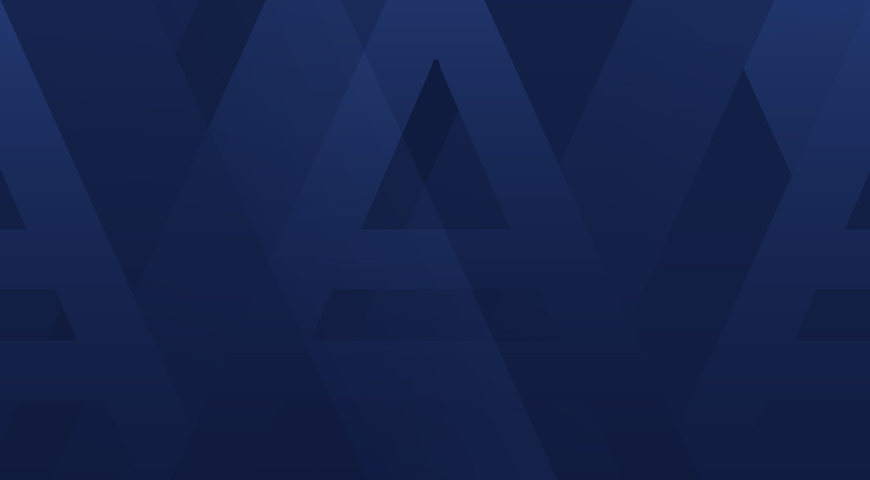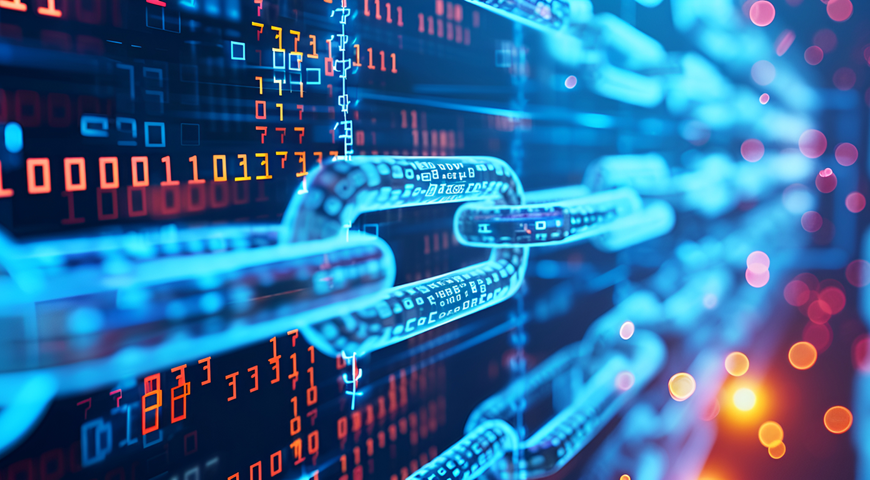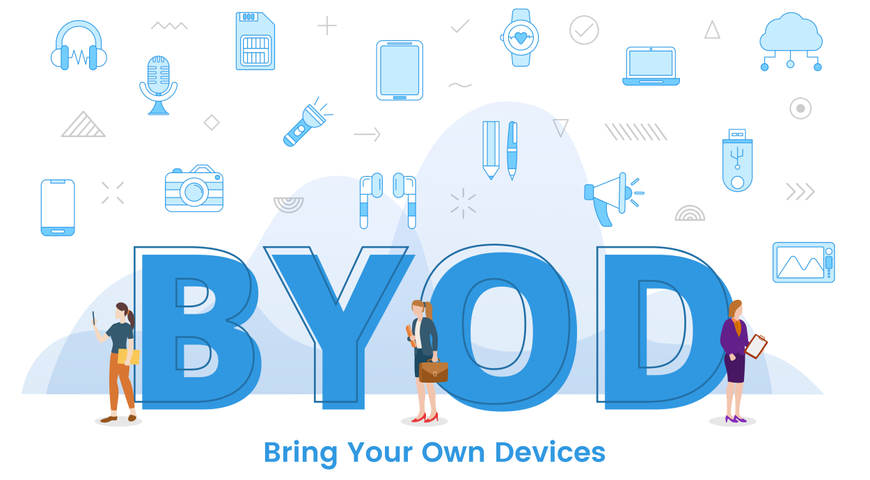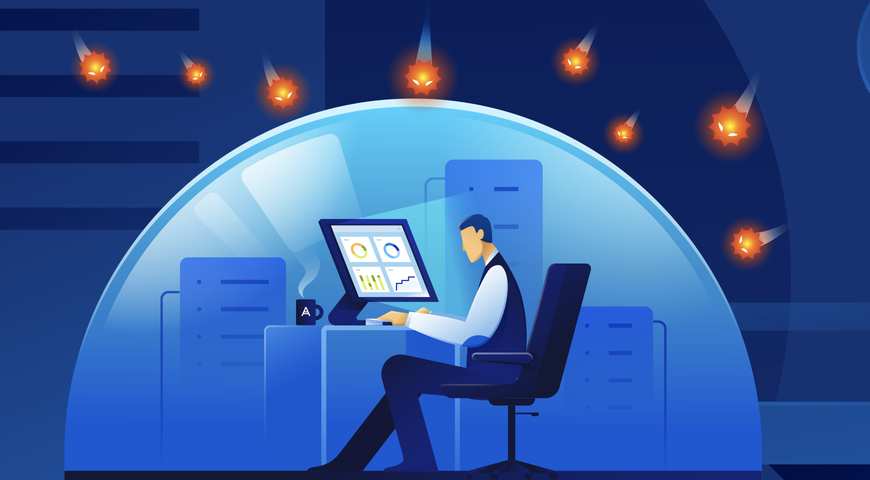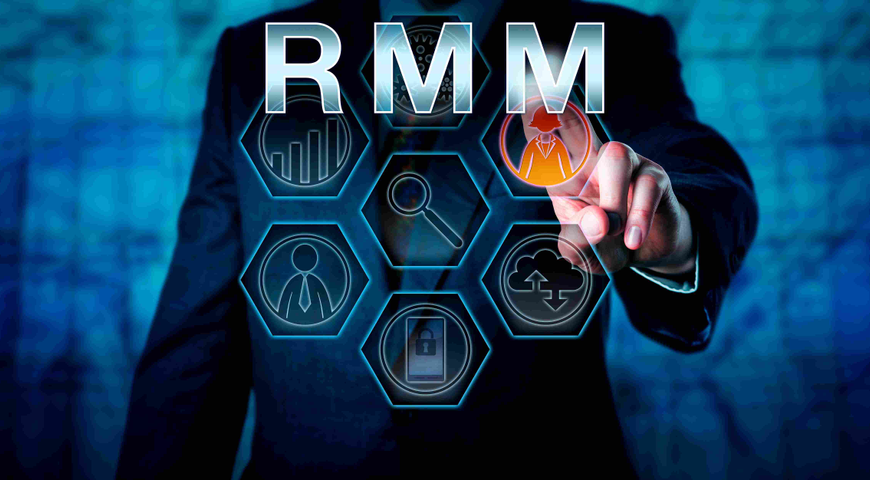
As a managed service provider (MSP), you offer clients three major value points: no IT infrastructure pains, reliability and approachable support. You need to efficiently manage a client’s IT assets to provide all three successfully while still defending your margins.
Remote monitoring and management (RMM) platforms help you achieve both efficiency and improved profitability, by allowing your IT professionals to notice issues, react to them and manage multiple client IT infrastructures within a single tool.
This article compares the major RMM tools available on the market, focuses on their strongest features and flags a few areas for improvement. Pricing, scalability and cybersecurity are also detailed for these platforms.
What is RMM software?
Unlike traditional IT management tools, RMM software focuses on remote capabilities. It allows your team to manage systems without being physically present, making it ideal for distributed networks and remote work environments.
Remote access and management capabilities make RMM software platforms sound similar to Mobile Device Management (MDM) and SaaS management platforms.
However, there are pronounced differences between the three. While MDM solutions, focus on end-user devices and the applications these run, RMM software covers the entire IT infrastructure, including network equipment, servers and storage devices.
On the other hand, SaaS management platforms only cover remote management of cloud-hosted applications.
Why MSPs need RMM software?
RMM software helps you as an Managed Service Provider (i) automating IT processes for better efficiency, (ii) enhancing security and compliance management and (iii) reducing downtime, thus improving your clients’ satisfaction.
Automation within one tool is the economical way to make the most out of your resources and serve more clients, without hiring additional technicians. It allows you to serve multiple accounts with small or large IT infrastructures without significant additional investments.
At a time when ISO 27001 and other security standards are a must-have for clients, you support them in protecting their data and devices. RMM software helps you address vulnerabilities and let accounts stay compliant, quickly and at scale.
Cloud-based applications have also raised the expectations for infrastructure availability and uptimes. RMM solutions are powerful in securing remote access capabilities and remote troubleshooting, saving minutes or hours of unnecessary downtime.
Key features to look for in the best RMM software
Every RMM platform comes with core features that make it RMM-capable in the first place. Here are the primary features to look for, but also the less-top-of-mind capabilities, such as integrated cybersecurity and automated reporting.
Real-time monitoring and alerting
real-time monitoring and alerting is a feature that continuously tracks the performance and health status of IT systems. It instantly notifies your team of any issues or anomalies at any endpoint, allowing them to respond quickly and prevent potential problems.
Automated patch management and updates
Automating patch installs and updates ensures all devices are up-to-date and secure without manual intervention. Business-critical data is protected from vulnerabilities without costing you hours of manual updates and rollbacks.
Software deployment
Using RMM solutions for software deployment improves efficiency for your team by allowing them to distribute applications at scale to multiple devices across the entire IT network.
Remote access and control capabilities
Connecting to and managing devices when red alerts occur (or when preventive maintenance is needed) is one of the core capabilities to look for in an RMM tool. Your technicians can solve issues and perform troubleshooting from anywhere, which is essential in our world where remote work has become the new norm.
Integrated cybersecurity features
Incidents and vulnerability alerts are only useful, if you can react to them and mitigate threats securely. Look for an RMM platform with a security-first approach ― either with native cybersecurity integration capabilities, or one that is part of a larger unified cybersecurity system.
Asset and inventory management
You can use RMM software to manage and track all IT assets within a client’s organization. It helps accountability and cost control, but most importantly, it allows you to maintain high cybersecurity and compliance standards for clients.
Reporting and analytics for better decision-making
RMM reporting and analytics help your team monitor key metrics (systems performance, uptime and stability) and identify and react to trends that may impede operations.
From a profitability standpoint, RMM analytics allow you to regularly report to clients with accurate, visual information, giving them tangible value and attentive customer care.
Comparing the top RMM software solutions
After we already discussed the core features to look for when selecting the right RMM software for your business, now it is time to discuss the best RMM tools, their unique features, and their pros and cons. So let's waste no more time and get started.
Acronis RMM overview
Acronis RMM is a secure, AI-powered tool that helps your IT team manage and monitor systems remotely. It boosts security for devices and Microsoft 365 and improves technician efficiency with automation.
Based on analysis of 2,000+ user reviews on G2.com, Acronis Cyber Protect Cloud, including its RMM capability, consistently gets the highest ratings for security, customer experience and support.
Acronis RMM pros
- Platform approach and native integrations—Acronis RMM is part of a unified platform that includes PSA, backup, disaster recovery, and cybersecurity—all managed through the same console and agent. This integration improves usability for technicians, enhances service reliability, and strengthens client protection by eliminating gaps between tools.
- Security-first approach — Eliminating cybersecurity risks is at the core of all Acronis products, including their RMM tool. It comes with vulnerability assessments, scripting with self-defense, digital signature checks, and secure remote connections.
- Smart Automations — Acronis RMM allows technicians to automate patching, run scripts with a single click, and automate repetitive tasks without compromising on security and compliance.
- Rollback patch management — Cancelling patch updates is equally important to automating them. Acronis RMM comes with automated patching for Microsoft 365 and 300+ third-party applications, along with an easy rollback option in case issues occur.
- Microsoft 365 management — Acronis RMM comes with extensive support for MS 365 environments, including posture management, advanced backup solutions, and compliant user onboarding and offboarding.
- Intuitive interface — The software comes with an extremely user-friendly interface. As we all know, even the best tools can become worthless if constantly facing difficulties navigating the software.
Acronis RMM cons
Most clients and partners commend Acronis RMM as a superior-quality tool. Their suggestions for improvement included:
- Manual interventions needed—In the rare cases when the RMM tool goes offline, restarting it is needed to not disrupt automated backup and security processes.
- Invoicing structure — Previously, users lacked visibility into the real-time cost of a client's active configuration. This has now been addressed with a simplified and automated billing setup in Acronis PSA.
Acronis RMM pricing and scalability considerations
The cost of Acronis RMM depends on the number of devices you will be looking after. You have the option of using their price calculator or contacting their sales team for an accurate quote. A free trial is available, and you can scale from supporting a few small clients to managing multiple large accounts.
NinjaOne overview
NinjaOne is a cloud-native endpoint management platform that offers automated patching, monitoring, and visibility for IT environments of any scale.
Pricing is flexible, with options for monthly or annual plans.
NinjaOne pros
NinjaOne is among the best RMM solutions because it has
- Intuitive interface — All essential features come with an intuitive UI and a single dashboard for monitoring and automating routine tasks.
- Powerful for activity monitoring, remote monitoring, managing security patches, and device management
- Over 40 native integrations—NinjaOne can integrate natively (i.e., little to no customization or API builds required) with solutions from Microsoft Azure, Cisco, Halo, and Acronis.
NinjaOne cons
The features of NinjaOne requiring improvement include
- Disaster recovery — Given that it is one of the key remote control requirements in RMM software, NinjaOne scores relatively low on disaster recovery capabilities.
- Remote wiping — Even with a comprehensive solution like NinjaOne, clearing data from compromised devices is challenging.
- Limited mobile app functionalities — many users report the limitations of NinjaOne's mobile app, as key activities such as software updates, patch management, and running custom scripts are unavailable on mobile devices.
NinjaOne pricing and scalability considerations
If you are a smaller MSP, NinjaOne's pricing comes at the premium end of RMM solutions. Their pricing is custom and varies across client accounts. It's nevertheless a piece of software that scores high on customer satisfaction and enables technicians to scale to any IT infrastructure size without compromising on remote control and monitoring.
Atera overview
Atera is an all-in-one IT management platform with RMM, professional services automation (PSA), and helpdesk offerings.
Their pricing is based on the number of technicians using it, with flexible monthly and annual plans.
Atera pros
- Patch management — Security patches are easy to deploy with Atera. Its remote access capabilities stretch beyond monitoring and user-friendly interface, including intelligent automation and endpoint security.
- Remote monitoring and access — Network devices, servers, virtual machines, and storage devices are securely monitored and managed from one console.
- Alerting — Atera's platform has many options for alerting technicians in case of network issues and security issues — such as pop-up notifications, emails, texts, and automated calls.
- Easy-to-use admin console — An intuitive user interface is among Atera's strengths.
Atera cons
- Limited integrations — While it's mostly a great RMM platform, a major drawback of Atera is its limited ability to integrate with other third-party software.
- Reporting capabilities — Customizing performance reports is not as flexible as with other RMM tools.
Atera pricing and scalability considerations
Atera's pricing structure is simple and based on the number of IT professionals using it, not the number of devices connected to it. There is a 30-day free trial available, with monthly prices for smaller MSPs starting at $129 per user.
If your IT department is larger and in need of enterprise-grade services and integrations, Atera will cost you up to $219 per user per month, or you would have to request custom pricing for additional support and feature sets.
ConnectWise overview
ConnectWise RMM software is part of a larger set of ConnectWise applications used for business management, unified monitoring and management, and cybersecurity. With a strong community of managed service providers as clients, ConnectWise RMM provides great tools and support.
Their pricing is custom, but a free trial is available.
ConnectWise Pros
According to users, this RMM platform has its strengths in
- Automation — The ease of automating tasks and setting up workflows helps you solve small issues before they become real problems.
- Supporting multiple operating systems — Supporting, rebooting, and upgrading Apple devices is easily done with ConnectWise RMM software.
- Fast and secure access — You can expect minimal lag time during remote access sessions.
- Quick-to-configure tool — ConnectWise RMM can be up and running within a day, with account setup taking 15-30 minutes.
ConnectWise Cons
The major weaknesses cited about ConnectWise RMM are
- Steep pricing — Unlike other tools, ConnectWise's RMM solution price is quoted per user and per number of connected devices at the same time.
- Integration limitations with third-party tools — As ConnectWise offers an entire ecosystem of applications, their RMM software integrates nicely with their other solutions. However, integration with tools and apps outside the ConnectWise universe is more technically challenging.
ConnectWise RMM pricing and scalability considerations
As already indicated above, the custom pricing of ConnectWise RMM takes into account the number of technicians in your team using it and also the number of connected devices. Other vendors take one or the other to base their pricing quote on. A free version of the platform can be tested for 30 to 45 days.
N-able RMM solutions overview
N-able offers two different RMM tools. N-able N-sight RMM is a comprehensive solution that combines remote monitoring and management, remote access, ticketing, and billing.
N-able N-central RMM, on the other hand, while having similar N-sight monitoring and management RMM capabilities, is much more flexible and allows for significant customization.
N-able pros
N-able's RMM alternatives serve two distinct segments of MSPs. With that in mind, the following benefits can be generalized across the two tools:
- Intelligent automation — Workflow automation is easy and fast because of the low-code/no-code and intuitive drag-and-drop UI.
- Multi-OS management — Windows, Linux, and Apple devices are all supported with flexible patch management in- and out-of-network.
- Third-party integrations — Both N-sight and N-central come with a native PSA integration and integrate well with other tools such as Acronis Cyber Protect Cloud, Cisco Meraki, and Flexis.
N-able cons
- Limited Android Support — Several users mention this limitation of N-sight RMM. It is described as better at supporting Apple devices.
- Not suitable for managing small and SME clients — N-sight RMM takes a fair bit of configuration, and even though it’s quoted as “technically sound for total control” for large clients, it’s not cost-efficient for managing smaller accounts
N-able pricing and scalability considerations
Both options from N-able are custom-priced but available for a free trial for a limited time. N-sight is suited for smaller MSPs, while N-central can be scaled at and for much larger organizations.
Acronis Cyber Protect Cloud as an RMM solution
MSPs choose Acronis Cyber Protect Cloud because it provides multiple layers of security, handles both cloud and local backups, and comes with attentive care and support structure.
Acronis Cyber Protect Cloud combines RMM, PSA, and cybersecurity in a single platform. It provides a standard level of cyber protection, backup, security, monitoring, management, and reporting functionality for endpoints, Microsoft 365 seats, and Google Workspace seats.
Unique features that set it apart from competitors include fail-safe patching and DeployPilot™. The latter allows you to deploy software automatically across multiple client environments. Its core strengths are centralization, automatic anti-malware scans and digital signature checks.
How RMM improves IT efficiency and service delivery
Through automation, RMM solutions reduce the manual tasks your team needs to perform. This means faster service for clients but also one that is less prone to human errors.
Proactive issue detection and resolution are other reasons for assessing the best RMM software options. Clients may not notice a smooth operation but do notice when it fails. Proactive maintenance solves that problem.
RMM software also enhances the collaboration between MSP teams through centralized dashboards, knowledge sharing, and integrated ticketing.
RMM and cybersecurity: a critical integration
RMM tools play an important role in identifying and mitigating threats early on. 24/7 remote monitoring is not just about device and network availability; it’s critical to triggering protection protocols on time.
By choosing a more comprehensive cybersecurity solution, you get all the tools needed to react when security alarms in an RMM get set off. With the ability to integrate and automate workflows between modules, broader protection can be enabled without any human intervention.
Best practices for securing endpoints using RMM software include implementing automated patching, running continuous endpoint scans, and integrating real-time alerts with automated triggers of firewalls, antivirus software, and data encryption.
How to choose the right RMM for your MSP
Choosing the right RMM software for your MSP is not as simple as picking the highest-rated option. You must take into consideration many factors that will navigate you to the best solution that perfectly fits your needs and meets your requirements. For your convenience, we have created a list with the factors to keep in mind when selecting software that will help you take your business to the next level.
Assess Your Business Needs and Client Requirements
The right RMM solution depends on the number of clients you serve, the size and complexity of their IT architectures, and how mission-critical specific RMM features are to them (security-first vs. simplicity, price vs. top SLAs).
Consider whether remote monitoring and management is needed for on-premise versus cloud-hosted applications. Your service and pricing models may also dictate which direction to go.
Evaluate Ease of Deployment and User-Friendliness
Ease of use is best assessed by reading real user reviews on websites like Capterra, Clutch, G2, or even Reddit. There, you will find IT professionals with different proficiency levels ― look for reviews of users similar to your team’s capabilities. The right RMM software for some is not the easiest to use for others.
Check for vendor support and training resources
RMM solutions that get highly rated on features and capabilities might still score low on customer support.
Especially in cases when your RMM tool requires a fair bit of customization, browse through the support options (ticket system, FAQs, contact modes) of your preferred vendor and look for signals on how well supported you will be.
The Future of RMM for MSPs
Remote monitoring, just like most other digital capabilities right now, is moving towards being AI- and machine-learning-driven. AI’s strength in automation and analytics can help you spot trends, threats and vulnerabilities before a trained human eye does.
By running as the underlying engine of ticketing systems and chat operations, AI can also help you serve and support your clients accounts better.
Other trends shaping the RMM software landscape include
- Cloud-first and hybrid cloud RMM solutions
- Cybersecurity top-of-mind with zero trust architectures on the rise
- Unified platforms
- White labeling RMM software with your own branding
What can you expect from the next generation of RMM tools? While AI can’t be fully trusted, it's "learning" so fast that hyper-automated RMM platforms will soon be the norm.
FAQs
How Does RMM Software Help Reduce Operational Costs?
RMM software reduces operational costs by tackling the costs associated with manual IT infrastructure management. Having an RMM tool in place allows you to monitor and manage multiple clients at scale with the same number of IT staff. Your team can cover more tasks, more efficiently, and without risks for their mental workload or the IT environments they are responsible for.
Can RMM Software Integrate with Other MSP Tools?
Yes, most RMM software vendors offer native integrations with other MSP tools. Some platforms have more extensive standard integration capabilities (NinjaOne, Acronis Cyber Protect Cloud), while others require customization and API work (Atera, ConnectWise).
How Does Automated Patch Management in RMM Improve IT Security?
Automated patch management minimizes human errors when vulnerabilities occur. With automation, your IT team applies security patches consistently and without delays. Automation handles the repetitive task of updating all endpoints and systems simultaneously, without overwhelming your team.
What Are the Key Differences Between RMM and PSA Software?
PSA applications cover all pillars of an MSP's business model. A PSA platform supports billing, help desk management, sales, marketing, and project management, among other disciplines. RMM platforms, on the other hand, focus specifically on IT infrastructure performance, its remote control, monitoring, and support.
How Does Acronis Cyber Protect Cloud Compare to Other RMM tools?
Acronis Cyber Protect Cloud (RMM) is often compared to Datto RMM, as both have a security-first approach. Acronis, however, combines RMM, PSA, and cybersecurity in one platform. Thus, there is no need for multiple data protection solutions across the accounts you serve.
Can RMM Software Monitor Cloud-Based IT Infrastructures?
Modern RMM software can monitor and collect data from cloud servers on top of traditional on-premise IT infrastructure. Even traditional RMM solutions come with integration capabilities to allow incorporating cloud-focused monitoring and management add-ons.
Conclusion
When choosing the best RMM software, look beyond standalone tools and focus on unified security-first platforms like Acronis Cyber Protect Cloud. Consider the standard features of an RMM platform, but also keep an eye on next-gen RMMs—smart, autonomous, and deeply integrated with cybersecurity. If you want to take your business to a whole new level, then Acronis RMM is the right choice, because it provides you with all you need to automate most of the processes, increase your client base, and maximize your profits. So do not hesitate any longer and become part of the Acronis family; you won't regret it for a second.
About Acronis
A Swiss company founded in Singapore in 2003, Acronis has 15 offices worldwide and employees in 50+ countries. Acronis Cyber Protect Cloud is available in 26 languages in 150 countries and is used by over 21,000 service providers to protect over 750,000 businesses.
